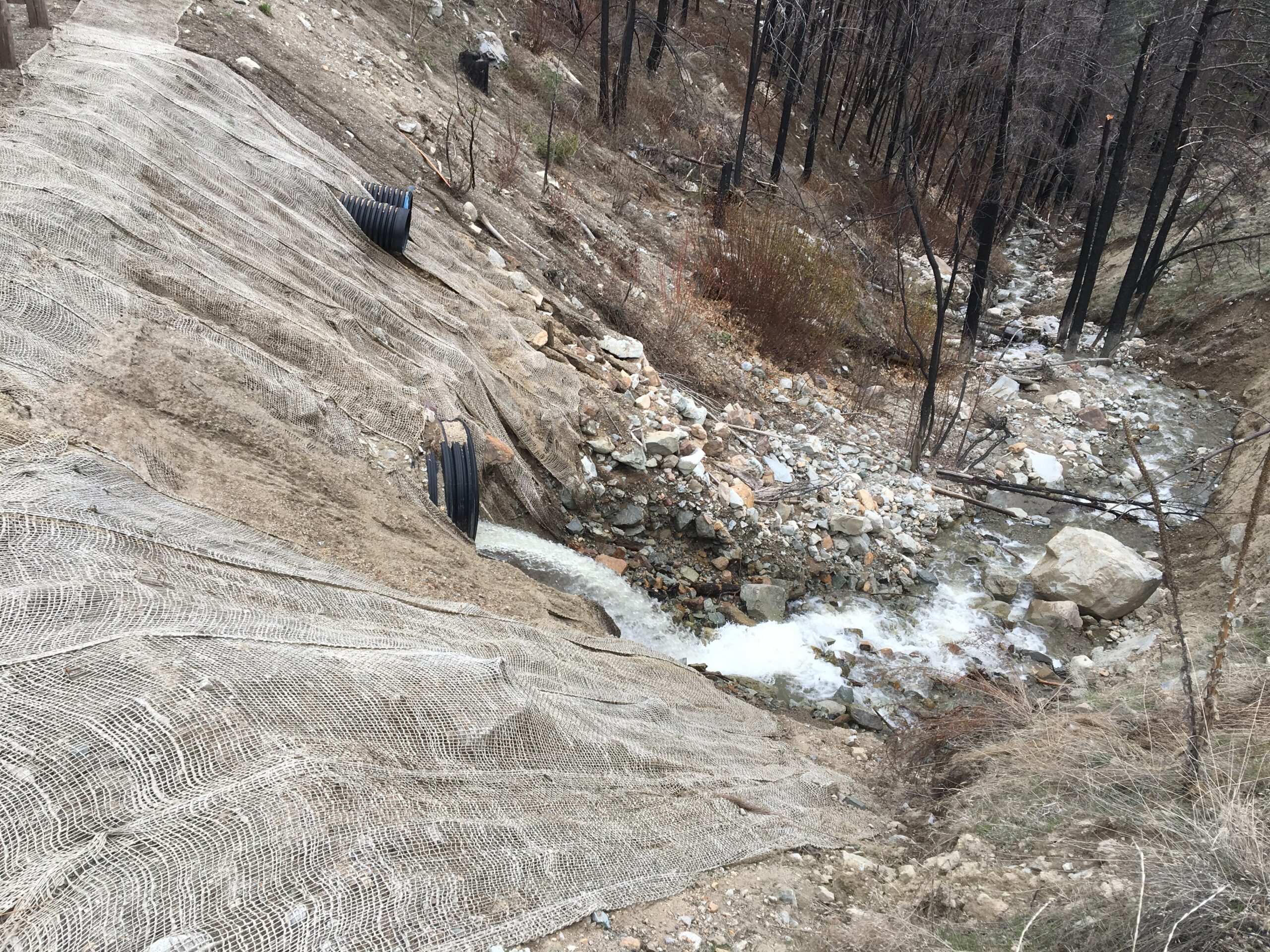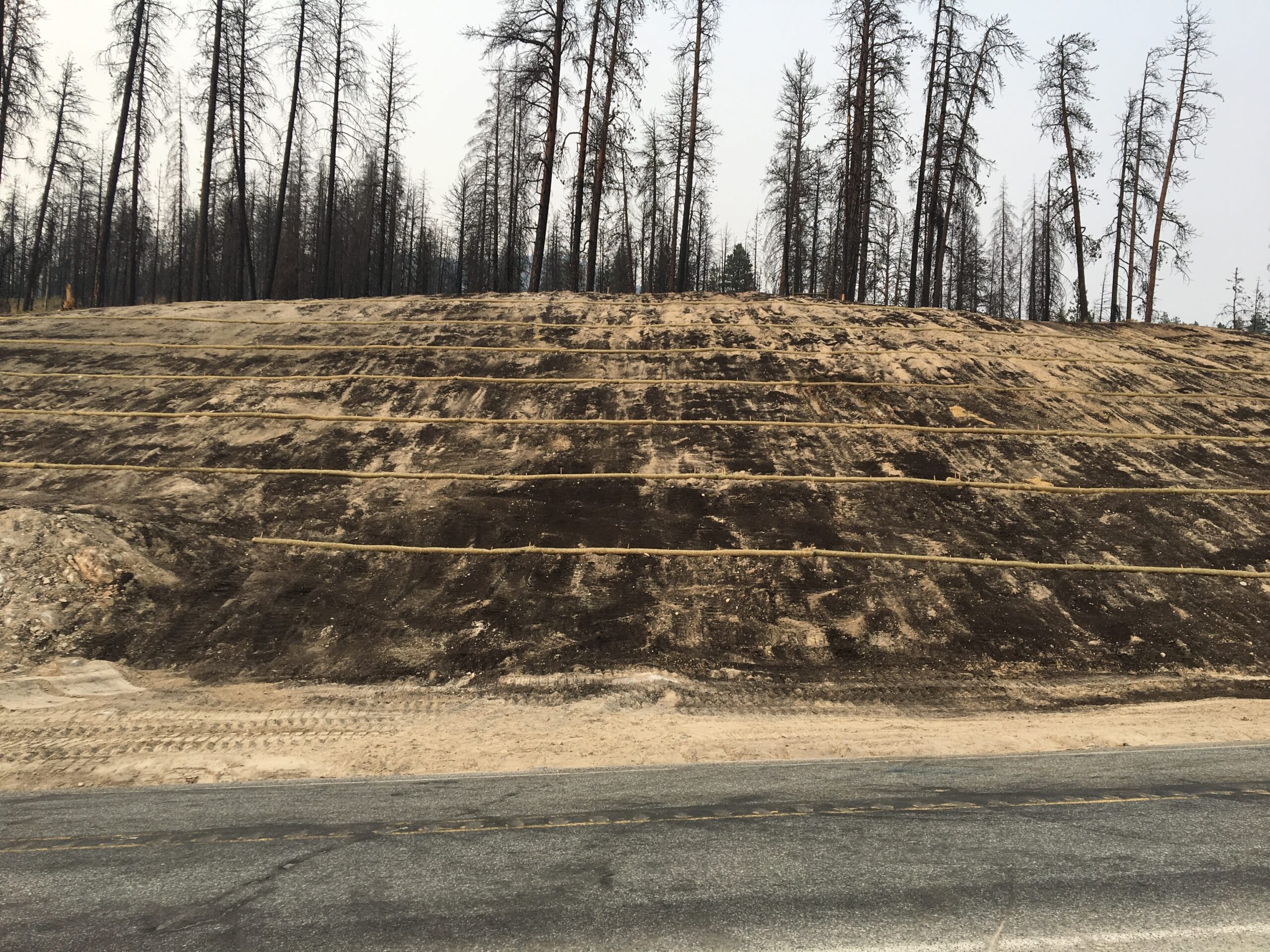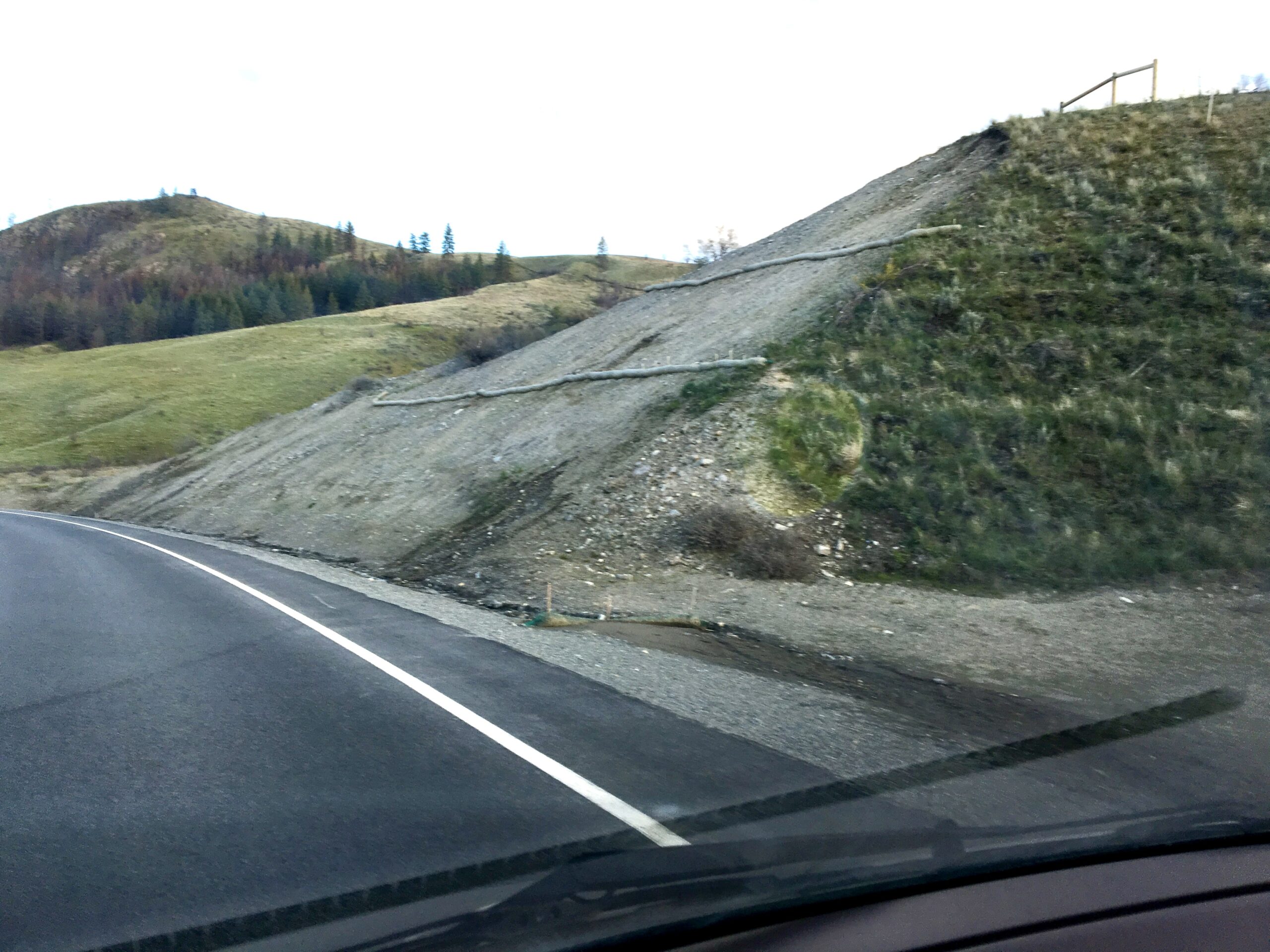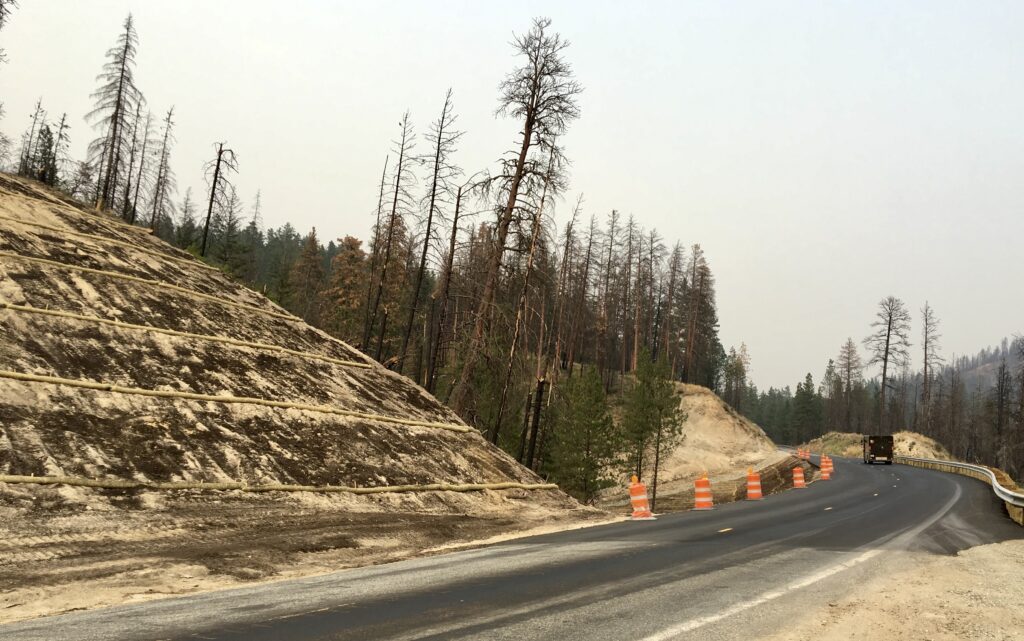Bank stabilization is often necessary post wildfire. Without stabilization, compounding damages and safety considerations may arise. If assessments and identification of risks are not done post fire, often times infrastructure such as roadways and utilities can be lost. On Loup Loup Pass in Okanogan County, debris flows and hill erosion resulted in a complete loss of a section of the highway. This was the only ingress and egress route for several homes and residents were unable to leave for nearly three months before the repairs were complete. It is the job of all people to recognize the potential for possible slope damages post fire. Reseeding, replanting and stabilization need to be attempted wherever there may be concerns. Common methods of bank stabilization are mulching, hydroseeding, geotextiles, and structural solutions such as retaining walls or riprap. Determining the methods necessary for post-fire bank stabilization depend on the specific area, conditions, and fire damage severity.
Mulching:
Applying a layer of straw, wood chips, or other organic materials to protect the soil surface from raindrop impact and reduce runoff velocity
Hydroseeding:
Spraying a mixture of seed, mulch, and bonding agent onto the slope to quickly establish a vegetative cover, enhancing soil stability and preventing erosion
Geotextiles and Erosion Control Blankets:
Using synthetic or natural fabrics to cover the soil surface, providing immediate erosion control and promoting vegetation growth
→ Learn more about bank stabilization and erosion control after wildfire
More Resources:
– Colorado State Extension
– FEMA Soil Stabilization Mitigation
– UCLA Slope Stabilization after the Eaton Fires




